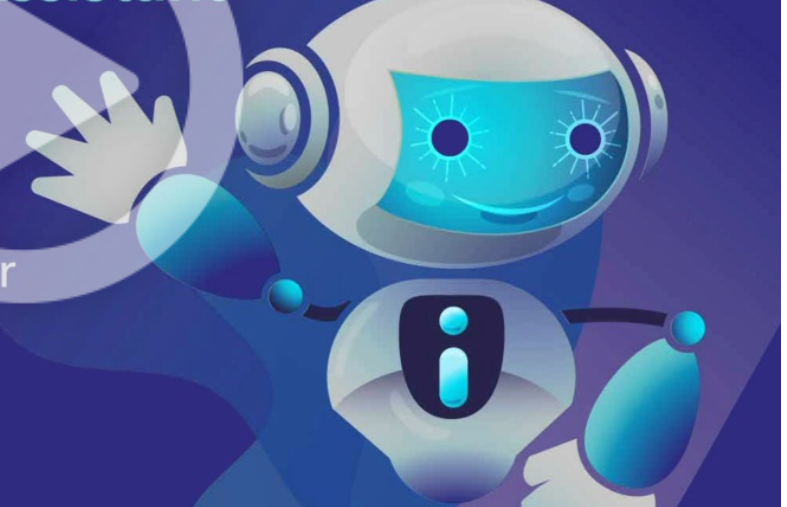From sanitizing wipes to romantic encounters, the pandemic turned 2020 into a record-breaking year for scams – which are often linked to identity theft and fraud. No one knows this better than employees of the nonprofit Identity Theft Resource Center (ITRC). Demands for live-chat support had been steadily increasing since 2014. But the ITRC was flooded with requests in 2020, including 1.1 million website visits and 11,000 contact center requests. How could they keep up with the continual, frenzied growth in demand?
Say hello to ViViAN, the newest identity theft assistant on the ITRC team. ViViAN, by the way, is not just any assistant – she’s a highly sophisticated (and friendly) chatbot who helps identity fraud victims during hours when live advisors aren't available. Before we take a closer look at ViViAN, let’s see what types of scams were happening in 2020, and why.
Types of scams, why they increased
The pandemic created a state of emergency for millions of people, all at once. And since emergencies trigger disaster scams as people scramble to meet basic needs, certain types of pandemic scams were predictable. The difference – and one reason it was so hard to keep pace – was the scale of the COVID-19 emergency.
In 2020, everyone was a potential victim. People all over the world needed the same basic items – like food, medicine, paper goods and cleaning supplies. There were even unique pandemic must-haves, like masks. And later, vaccines. All these were targets for fraudsters.
Other types of scams weren’t as easy to anticipate. The pandemic led to an assortment of romance scams. Charity scams. Pet adoption scams. And more. Along the way, child identity theft and unemployment fraud skyrocketed.
Underlying these scams were opportunistic fraudsters. They saw a once-in-a-lifetime chance to prey on individuals’ increased vulnerabilities and fears, anxiousness and loneliness.
With scams and identity theft soaring, the need to assist victims at all hours – no matter when they reached out for help – was clear. Since her recent release, ViViAN has become essential to the work of the organization.
Meet ViViAN, the virtual assistant
The chatbot named ViViAN, short for “virtual victim assistance network,” expands the capacity of live advisors at the ITRC. It’s no secret that ViViAN is not human. But because she is so helpful, friendly and knowledgeable, staff members think of her as another team member who is there to help them assist more people, faster.
“The idea isn’t to supplant our live advisors but to support and augment them to improve the victim experience,” ITRC CEO Eva Velasquez says. “How can we serve more people in real time? And how can we more quickly deliver the information they need and get them on the road to recovery?”
As Velasquez puts it, ViViAN is a great way to help people navigate and understand their next steps. She’s like a specialized librarian who can point you in the right direction. She can help people get started with first steps, answer basic questions, and help victims double-check to make sure they’re following all the correct steps. And unlike live advisors, she can handle multiple inquiries at the same time.
The tech behind the chatbot
With advancements in conversational AI, developers can create chatbots (or virtual assistants) like ViViAN with low or no coding. ViViAN was built with a variety of technologies that are sophisticated, yet easy to use.
Natural language processing (NLP) enables humans to interact with machines and get human-like, intelligent responses. Through linguistic rules, machine learning and deep learning, chatbots like ViViAN can interpret complexities in language and improve conversations between humans and machines.
The humanizing technology behind the chatbot’s development is natural language generation. It combines three capabilities that create interactivity and improve the chatbot’s interchanges with human language:
- Natural language understanding to help decipher what a user types.
- Conversation flow to define what is done with that knowledge.
- Natural language generation to craft an appropriate response.
To work best, the technology requires a deep knowledge base. ViViAN includes a wide variety of combined ITRC institutional knowledge. To build the chatbot, developers looked at what people were asking and how they were talking with live advisors in the call center. They used this information as a baseline for ViViAN. As a result, this virtual assistant is comprehensive, helpful – even kind. And she gives help precisely when people need it, which is not always during business hours.
The value of partnerships
ViViAN was born through a years-long partnership between the ITRC and SAS and was supported through a grant from the Department of Justice’s Office of Victims of Crime.
Combining collective knowledge and support through collaboration and partnerships is key to solving problems, Velasquez says. This can involve industries, governments, businesses and individuals.
As Saurabh Gupta, Senior Director of Data and Analytics at SAS, explains: “Using conversational AI and NLP to harness insights from your data can improve business decisions and build relationships with customers in an increasingly virtual business climate. In ITRC’s case, that means extending a virtual lifeline to more identity-crime victims.”
LEARN MORE | FIND OUT HOW SAS HELPS ORGANIZATIONS FIGHT IDENTITY FRAUD WANT MORE GREAT INSIGHTS MONTHLY? | SUBSCRIBE TO THE SAS TECH REPORT

2 Comments
This AI-driven chatbot that can team identify theft victims with help from the Identify Theft Resource Center is such an interesting SAS application! Thank you for the write-up. Which SAS products went into ViViAN ( Virtual Victim Assistance Network), and are they currently required by the ITRC or just during development?
Hi Jody, thanks for reading the post and inquiring about the solution! The SAS solution used here is SAS Conversation Designer: https://www.sas.com/en_us/software/conversation-designer.html
I'll ask one of our SAS experts to reach out to you soon to discuss more details.